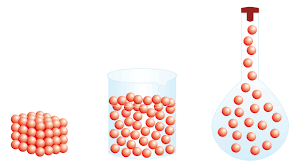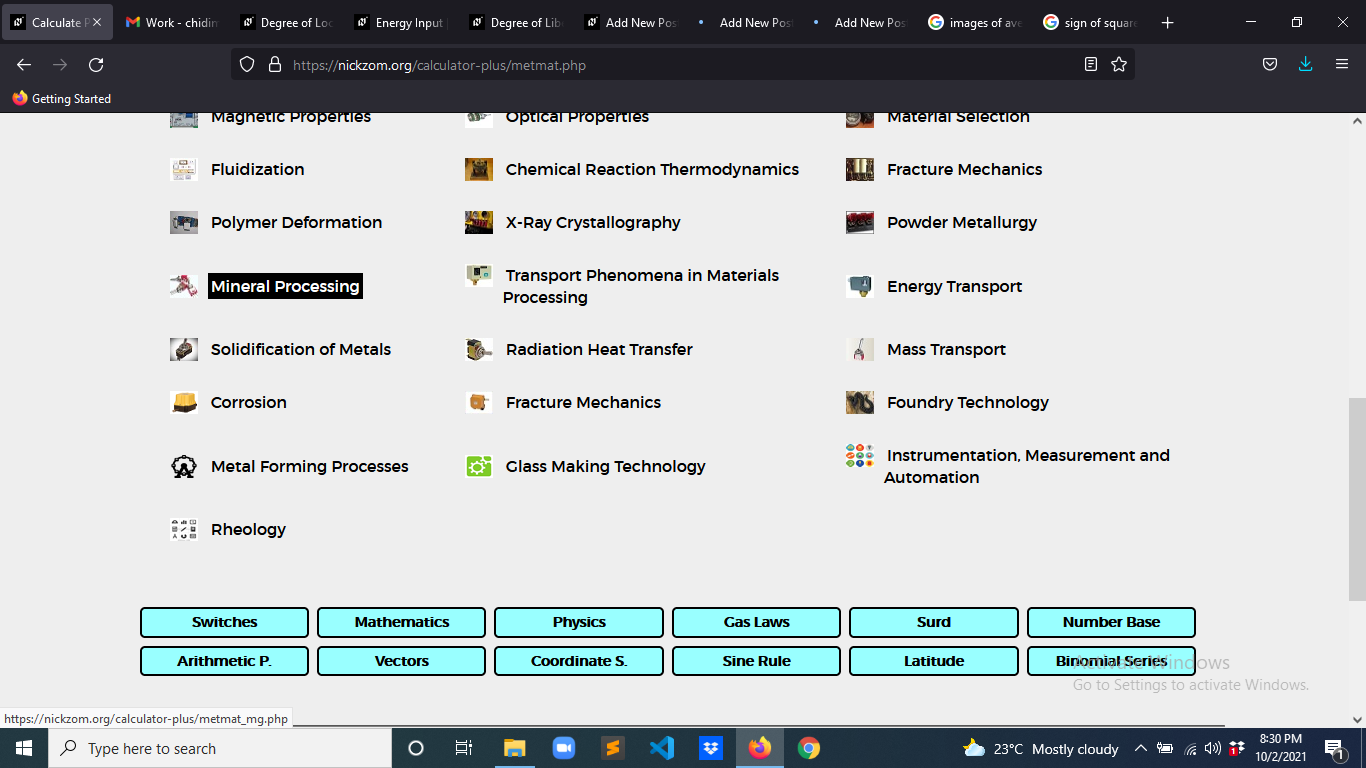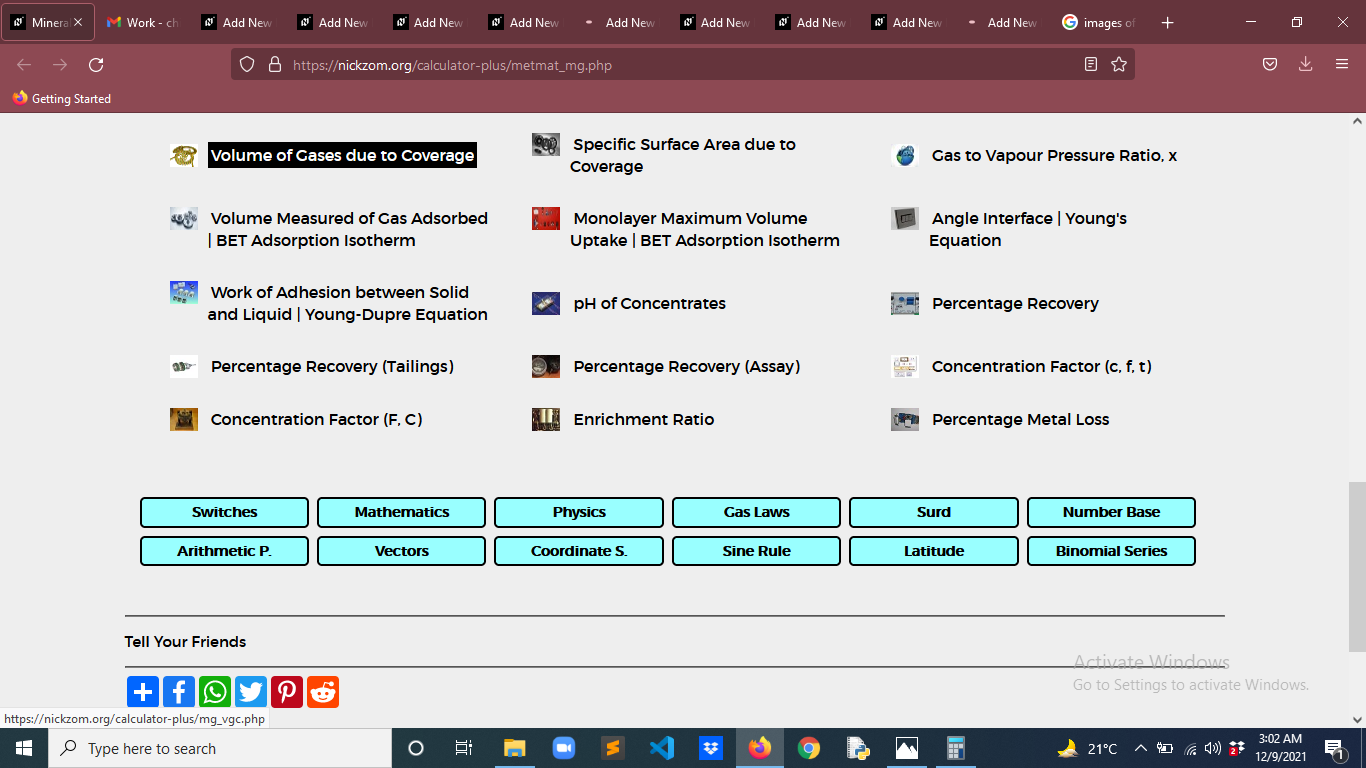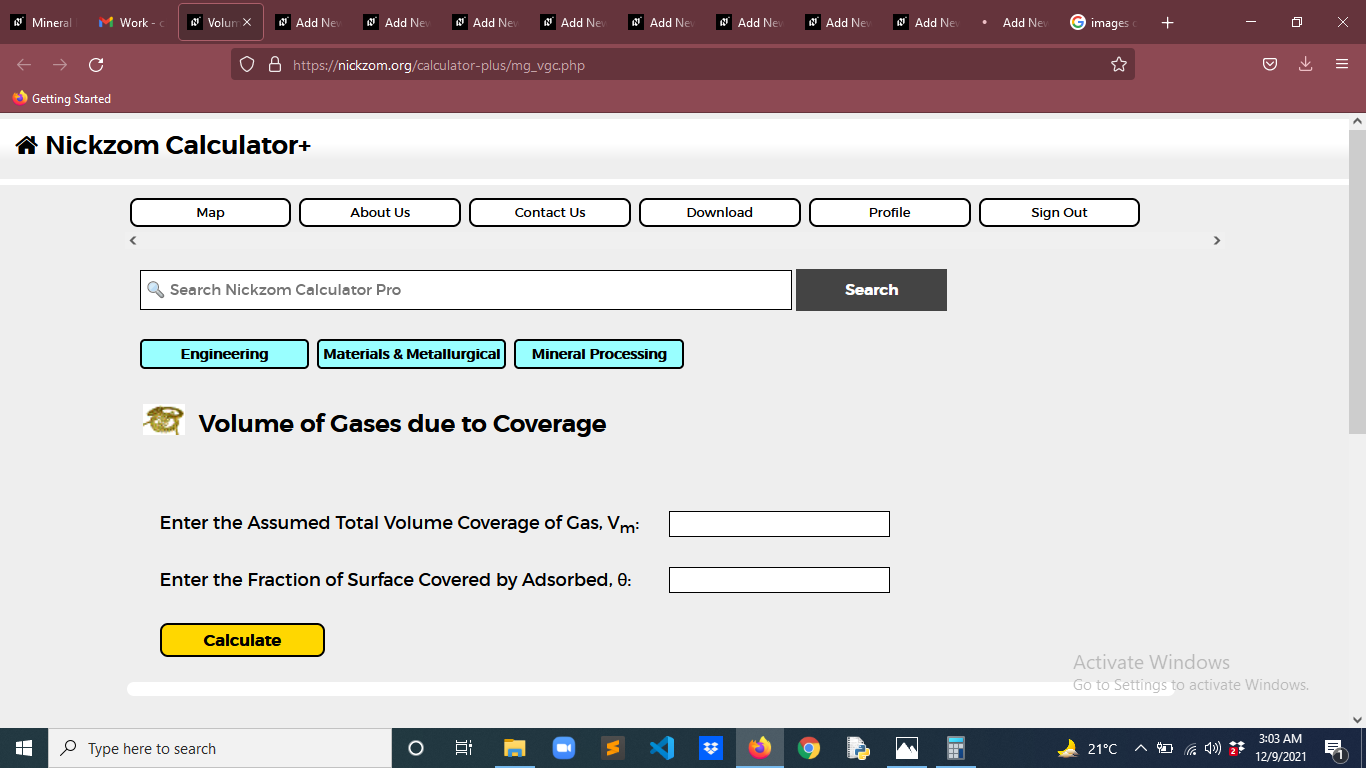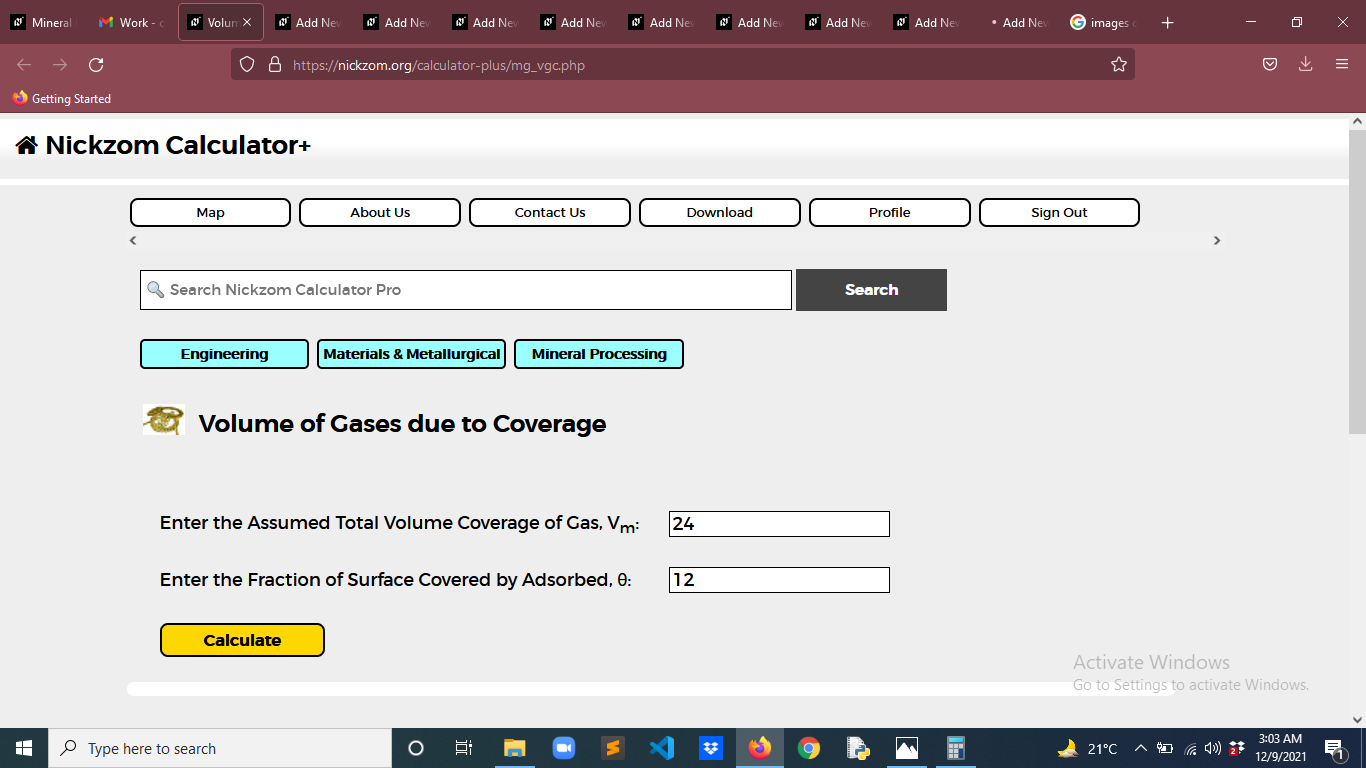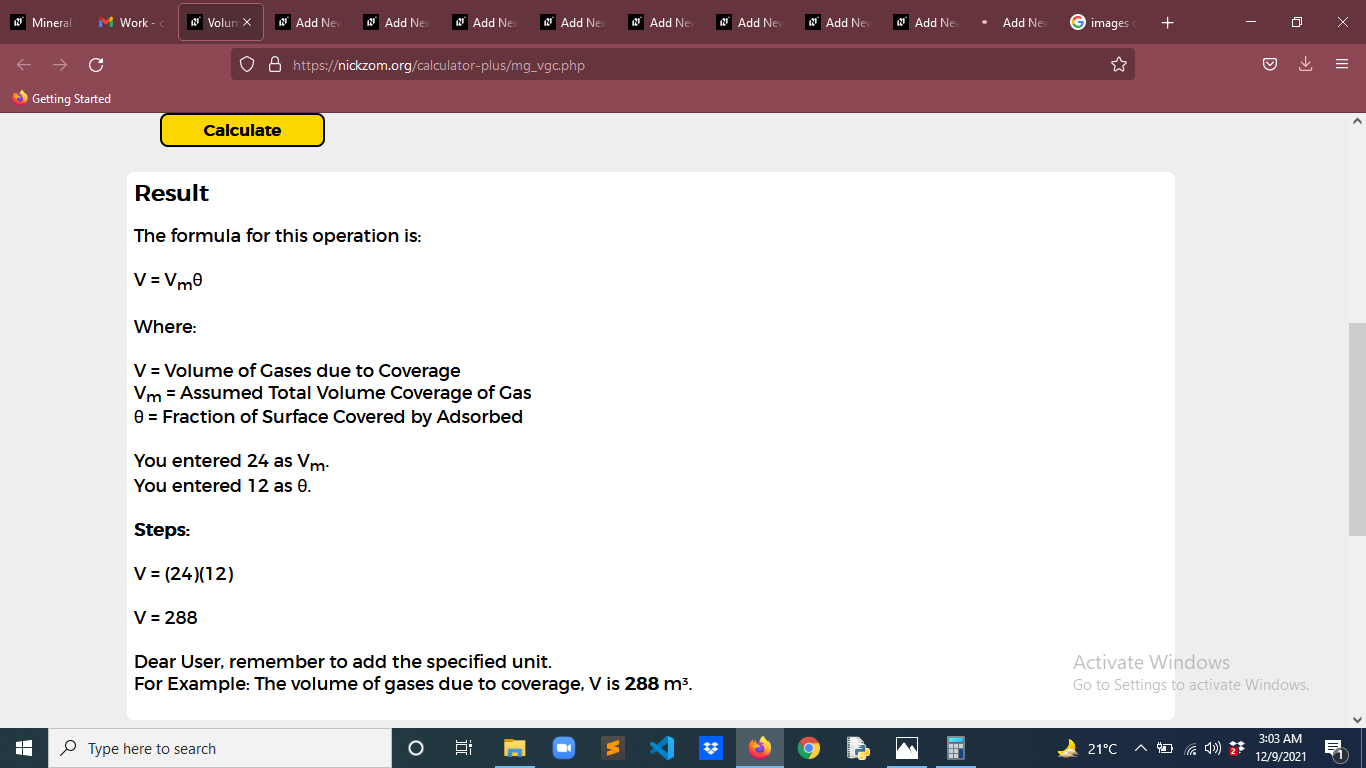How to Calculate and Solve for Volume of Gases due to Coverage | Mineral Processing
Last Updated on December 10, 2021
The image above represents volume of gases due to coverage.
To compute for volume of gases due to coverage, two essential parameters are needed and these parameters are Assumed Total Volume Coverage of Gas (Vm) and Fraction of Surface Covered by Adsorbed (θ).
The formula for calculating volume of gases due to coverage:
V = Vmθ
Where:
V = Volume of Gases due to Coverage
Vm = Assumed Total Volume Coverage of Gas
θ = Fraction of Surface Covered by Adsorbed
Let’s solve an example;
Find the volume of gases due to coverage when the assumed total volume coverage of gas is 24 and the fraction of surface covered by adsorbed is 12.
This implies that;
Vm = Assumed Total Volume Coverage of Gas = 24
θ = Fraction of Surface Covered by Adsorbed = 12
V = Vmθ
V = (24)(12)
V = 288
Therefore, the volume of gases due to coverage is 288 m³.
Calculating the Assumed Total Volume Coverage of Gas when the Volume of Gases due to Coverage and the Fraction of Surface Covered by Adsorbed is Given.
Vm = V / θ
Where:
Vm = Assumed Total Volume Coverage of Gas
V = Volume of Gases due to Coverage
θ = Fraction of Surface Covered by Adsorbed
Let’s solve an example;
Find the assumed total volume coverage of gas when the volume of gases due to coverage is 32 and the fraction of surface covered by adsorbed is 4.
This implies that;
V = Volume of Gases due to Coverage = 32
θ = Fraction of Surface Covered by Adsorbed = 4
Vm = V / θ
Vm = 32 / 4
Vm = 8
Therefore, the assumed total volume coverage of gas is 8.
Calculating the Fraction of Surface Covered by Adsorbed when the Volume of Gases due to Coverage and the Assumed Total Volume Coverage of Gas is Given.
θ = V / Vm
Where:
θ = Fraction of Surface Covered by Adsorbed
V = Volume of Gases due to Coverage
Vm = Assumed Total Volume Coverage of Gas
Let’s solve an example;
Find the fraction of surface covered by adsorbed when the volume of gases due to coverage is 44 and the assumed total volume coverage of gas is 11.
This implies that;
V = Volume of Gases due to Coverage = 44
Vm = Assumed Total Volume Coverage of Gas = 11
θ = V / Vm
θ = 44 / 11
θ = 4
Therefore, the fraction of surface covered by adsorbed is 4.
Nickzom Calculator – The Calculator Encyclopedia is capable of calculating the volume of gases due to coverage.
To get the answer and workings of the volume of gases due to coverage using the Nickzom Calculator – The Calculator Encyclopedia. First, you need to obtain the app.
You can get this app via any of these means:
Web – https://www.nickzom.org/calculator-plus
To get access to the professional version via web, you need to register and subscribe to have utter access to all functionalities.
You can also try the demo version via https://www.nickzom.org/calculator
Android (Paid) – https://play.google.com/store/apps/details?id=org.nickzom.nickzomcalculator
Android (Free) – https://play.google.com/store/apps/details?id=com.nickzom.nickzomcalculator
Apple (Paid) – https://itunes.apple.com/us/app/nickzom-calculator/id1331162702?mt=8
Once, you have obtained the calculator encyclopedia app, proceed to the Calculator Map, then click on Materials and Metallurgical under Engineering.
Now, Click on Mineral Processing under Materials and Metallurgical
Now, Click on Volume of Gases due to Coverage under Mineral Processing
The screenshot below displays the page or activity to enter your values, to get the answer for the volume of gases due to coverage according to the respective parameter which is the Assumed Total Volume Coverage of Gas (Vm) and Fraction of Surface Covered by Adsorbed (θ).
Now, enter the values appropriately and accordingly for the parameters as required by the Assumed Total Volume Coverage of Gas (Vm) is 24 and Fraction of Surface Covered by Adsorbed (θ) is 12.
Finally, Click on Calculate
As you can see from the screenshot above, Nickzom Calculator– The Calculator Encyclopedia solves for the volume of gases due to coverage and presents the formula, workings and steps too.

